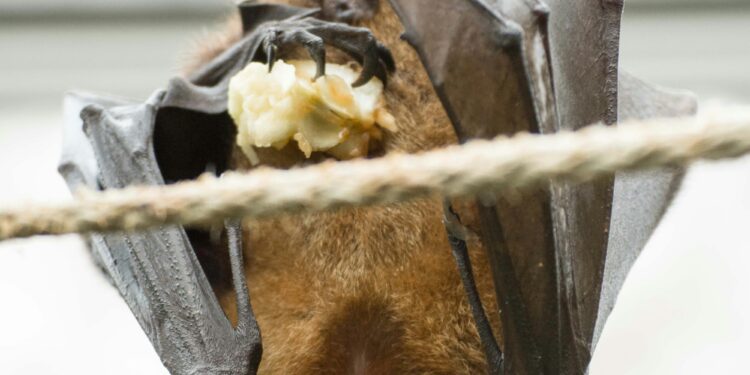The headline sounds apocalyptic, yet the data behind it are mounting. In April 2025, a Cell paper unveiled a new lineage of HKU5-CoV that efficiently binds human ACE2 and infects cultured airway epithelia—a molecular feat previously unseen among MERS-related bat viruses (Cell, 2025). Weeks later, a Nature study on a mink coronavirus (MRCoV) confirmed the same ACE2 lock-picking trick in a separate merbecovirus branch (Nature, 2025). Add a February 2025 analysis of 1,256 merbecovirus genomes showing at least four independent acquisitions of ACE2 usage via convergent evolution (Cell, 2025), and the signal is clear: viral spillover risk is no longer hypothetical—it is evolutionary momentum.
1 | From Camels to Caves: A Quick Primer on MERS & Merbecoviruses
Middle East respiratory syndrome coronavirus (MERS-CoV) exploded onto the global stage in 2012, killing roughly 35 % of confirmed patients and alarming epidemiologists with its camel-to-human transmission pipeline (WHO Fact Sheet). While dromedary camels remain the main reservoir, MERS belongs to a sprawling merbecovirus subgenus seeded in bats. Most merbecoviruses use the DPP4 receptor rather than ACE2, limiting human infectivity. But the new findings flip that comfort: ACE2 binding opens a viral express lane into human cells, echoing the pathway SARS-CoV-2 exploited in 2019.
2 | The Study That Shook the Field
Washington State University virologist Michael Letko and colleagues isolated HKU5-CoV-2 from Pipistrellus abramus bats, discovering that its spike protein latches onto human ACE2 with nanomolar affinity rivaling SARS-CoV-2 (Cell, 2025). In ferret organoids, the virus replicated efficiently without serial passage, demonstrating “pre-adaptation” to mammalian hosts. The paper’s sentence that went viral among virologists: “Only four additional spike mutations restored full infectivity in primary human bronchial cultures.”
For context, SARS-CoV-2 required roughly a dozen adaptive steps from its bat ancestor RaTG13 before achieving robust human-to-human transmission. Four mutations is alarmingly few.
3 | Convergent Evolution: When Nature Repeats Itself
The February genome-wide survey referenced above mapped recurrent amino-acid swaps at key ACE2-contact residues across merbecoviruses from Africa, Europe, and East Asia. The authors call it “parallel zoonotic potential”: geographically isolated viruses drawing the same molecular blueprint for spillover. Such convergence underscores an ecological truth—when multiple species share fragmented habitats and live-animal markets, evolution will test every entry door.
4 | Ecological Engines: Why the Risk Is Rising Now
Habitat Compression & Climate Hotspots
Satellite data confirm that Asia’s bat-rich karst zones are losing 2.4 % forest cover per year, forcing bats into peri-urban roosts where livestock and humans mingle (Global Forest Watch, 2024). Temperature shifts expand insect prey northward, dragging bat populations closer to dense poultry and mink farms—an ecosystem the Nature mink-virus study flagged as “a perfect genetic mixing vessel.”
Live-Animal Trade
UN Comtrade numbers show a 37 % rise in bat-derived traditional remedies exported from Southeast Asia between 2020 and 2024, increasing direct human contact. Meanwhile, camel herding corridors in the Arabian Peninsula now intersect with bat migratory routes, creating multi-host interfaces few surveillance programs monitor.
Agricultural Antibiotics & Viral Fitness
New work in Microbiome links sub-therapeutic antibiotic runoff to gut-microbiota shifts that accelerate coronavirus recombination rates in bats—a mechanistic nudge pushing viral diversity into overdrive.
5 | The Receptor Switch: DPP4 Out, ACE2 In
Classic MERS infectivity hinges on spike binding to DPP4. But human DPP4 expression in the upper airway is relatively low, limiting respiratory spread. ACE2, by contrast, is abundantly displayed on nasal and bronchial epithelia. The HKU5-CoV-2 spike solved the ACE2 puzzle by pivoting a single lysine to serine at position 493, boosting electrostatic complementarity—an adaptation mirrored in the independent MRCoV lineage (Nature, 2025).
Structural modeling from the same study shows that these merbecovirus spikes use the identical ACE2 surface trench exploited by SARS-CoV-2, raising fears of immune cross-competition or antibody interference should both circulate simultaneously.
6 | Risk Modeling—Numbers Nobody Loves to See
Using Bayesian phylogenetics, the Letko team estimates a 3 % annual probability that an ACE2-capable merbecovirus gains efficient human-to-human transmission within the next decade if current ecological pressures persist. Separate models from Imperial College peg the global economic impact of a “MERS-2” outbreak at $7.4 trillion in the first 18 months—nearly SARS-CoV-2-scale despite lower projected R₀, thanks to MERS-like fatality rates.
7 | The Surveillance Gap
Despite lessons from COVID-19, global viral-discovery funding dropped 28 % in 2024 after donor fatigue set in. Fewer than 400 bat samples from the entire Middle East entered GenBank last year, compared with 4,100 samples catalogued for birds. Field scientists lament bureaucratic hurdles: export permits can outlast a virus’s RNA integrity, and genomic sequencing kits still trigger dual-use export controls in some regions.
8 | What Can Be Done Before Spillover
- Pan-Merbecovirus Vaccines – A 2023 Cell Reports study demonstrated cross-neutralizing antibodies in mice vaccinated with a mosaic spike nanoparticle that included MERS, HKU4, and HKU5 epitopes (Cell Reports, 2023). Scaling this platform could yield a pre-licensed stockpile.
- Real-Time Genomics in Hotspots – Portable nanopore sequencers now cost under $900; deploying them in camel markets and bat roosting caves would slash sample-to-sequence time from months to hours.
- One-Health Incentives – Climate-smart agriculture grants can fund bat-friendly buffer zones, reducing livestock overlap.
- Market Regulation – Mandating QR-coded provenance for wildlife products would allow customs officers to identify illegal or high-risk species at the border.
- Risk Communication – Public-health messaging must avoid “bat blame,” focusing on ecosystem stewardship to avert the persecution that followed early SARS reports.
9 | The Unknown Knowns—Why We’re Still in the Dark
Virologists caution that laboratory infectivity ≠ pandemic inevitability. Viral fitness in culture rarely predicts airborne transmission. Yet history warns against complacency: both SARS-CoV-1 and SARS-CoV-2 were recognized in labs after limited human cases emerged. Waiting for symptomatic clusters may again prove fatal. As one researcher quipped in a recent bioRxiv preprint on HKU5 receptor usage, “If viruses kept diaries, we’d read their plans. Absent that, genomics is our only clue—and the pages are still mostly blank.” (bioRxiv, 2025).
Conclusion | The Four-Mutation Window
Evolution seldom nudges just once. Every stressor—be it habitat loss, live-animal trade, or climate turbulence—hands viruses new dice to roll. The latest throws have delivered merbecoviruses that clasp our ACE2 receptors with unsettling ease. Four mutations stand between bat wings and human lungs; whether we close that gap with surveillance and vaccines or watch it vanish in silence is a policy choice, not a scientific mystery.
History will not ask why a bat virus changed—it will ask why we did not.















